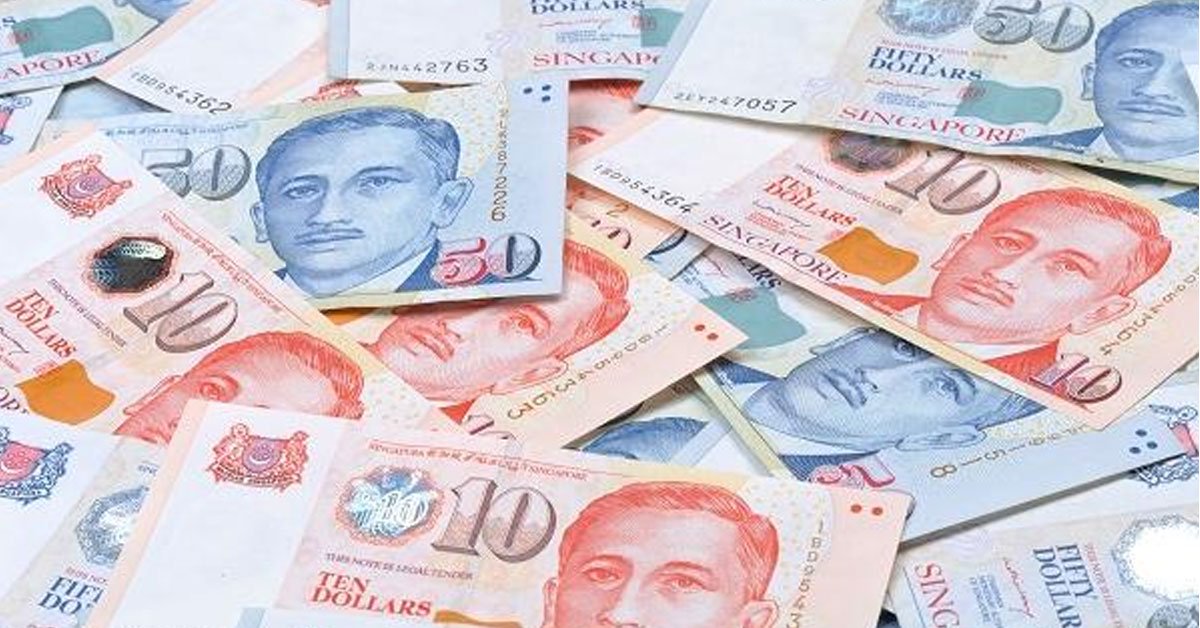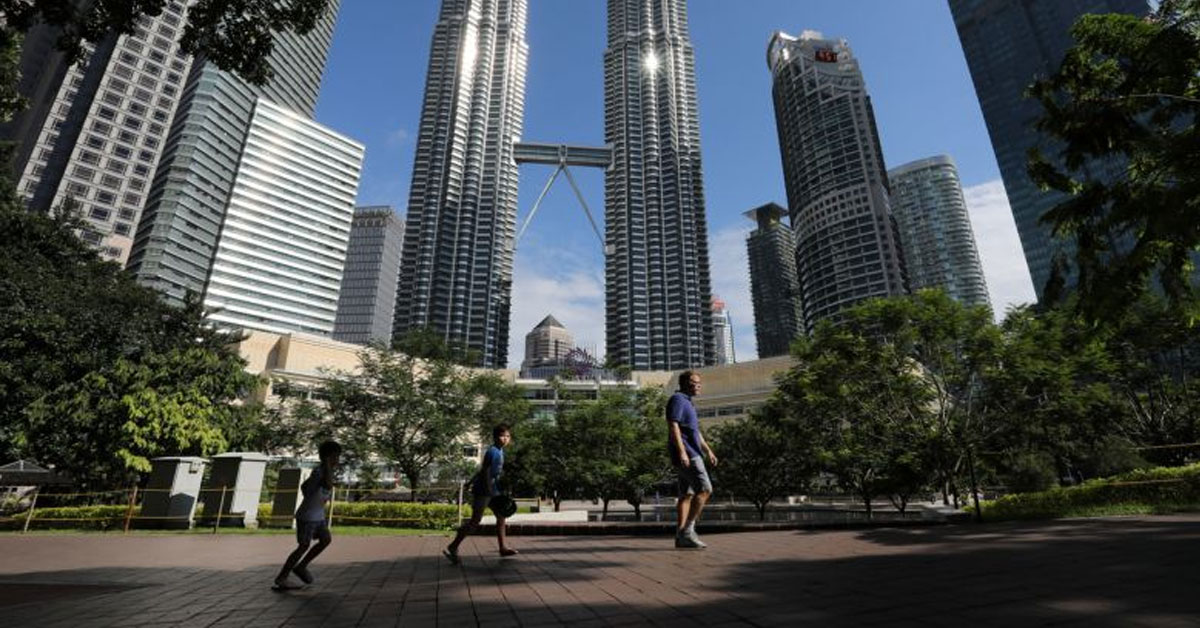The Covid-19 virus has taken away two things from us: our money and our health.
In addition to claiming over 82,000 lives, the coronavirus has eaten away at businesses, causing many to shut down and retrench its employees.
In order to prevent businesses in Singapore from crumbling, the government said it will draw on past reserves to fund stimulus measures including greater job support and pacakages for self-employed citizens.
But how much do we actually know about these reserves?
Reader: Obviously not much, that’s why I’m here lah
I know, it was a rhetorical question.
Reader: Rhetorical and stupid
Why are our readers so mean?
Anyway, if you want to learn about Singapore’s reserves, you have two options:
1. Go to the Ministry of Finance website, where they actually know what they’re talking about
2. Read this Goody Feed article written by a company who once wrote a piece called 7 Facts About Nose Hair, The Bush Hiding Inside Every Nose.

If you’re still here, I’m concerned, but I also have some facts for you.
Here are 10 facts about S’pore past reserves, the money that stops Singapore from becoming bankrupt.
1. It was introduced because of our vulnerability as a nation
You may have noticed, as the longest MRT journey across our island is around an hour, that we’re a pretty small country.
We also have no natural resources, which is why we import most of our food, including our water.
Moreover, when we became independent in 1965, we had meagre financial reserves, according to BIS.
You see, it’s because we’re a small and open economy that we needed to build up reserves to survive on our own as an independent nation and so, we can “withstand the shocks that come with being so small and open to the world”, said Mr Ravi Menon, Managing Director of the Monetary Authority of Singapore.
2. It’s made up of two assets
Our reserves are essentially the gahmen’s total assets (everything it owns) minus liabilities (the things that the Government has to spend on).
Thus, the reserves are made of two assets – physical and financial.
Physical assets include our land and buildings, and our financial assets include cash, securities, and bonds that belong to the government.
3. The reserves are held in three pots
According to BIS, Singapore’s reserves are held and managed in three distinct pots: the Monetary Authority of Singapore (MAS), GIC Private Limited (GIC), and Temasek Holdings.
MAS handles our official foreign reserves (OFR).
Set up in 1981, the GIC is a professional fund management company that manages the government’s foreign assets.
Temasek Holdings, formed in 1974, is an investment company wholly owned by the government.
4. The actual amount cannot be disclosed
If a government official accidentally told you the actual amount of Singapore’s national reserves, two men dressed in black would soon appear and do this:

That’s because the government doesn’t want to disclose the amount of our national reserves.
Why?
Advertisements
Well here’s an explanation from MOF:
“It is not in our national interest to publish the full size of our reserves. If we do so, it will make it easier for markets to mount speculative attacks on the Singapore dollar during periods of vulnerability.”
But…
5. We have nearly 400 billion in our OFR
That’s right. While we can’t disclose the actual amount of our reserves, a check on MAS’s website shows that we have a whopping 397,471 million of official foreign reserves.
This time last year, it was 400,696.3 million.
Advertisements
6. The president has to give approval before it can be drawn upon
In August 1984, then Prime Minister Lee Kuan Yew first brought up the idea of giving the president more powers to help safeguard the country’s reserves.
Six years later, a bill was introduced, which proposed the creation of an elected presidency scheme with veto powers to safeguard the national reserves and the integrity of the public service.
In other words, the President is kind of like the government’s parent in this context, and the government needs to ask her before they dip into the reserves.
That’s why President Halimah Yacob had to give her approval this year to draw from the reserves in a bid to cushion the blow to the economy from Covid-19.
7. It’s only been drawn on once before
Before the Covid-19 pandemic, the Singaporean government has only drawn on he reserves once before.
The first time was during the 2009 financial crisis, where the government withdrew S$4 billion from past reserves to fund two measures to boost the economy: the Jobs Credit scheme and the Special Risk-Sharing Initiative.
The funds were later returned to the reserves in 2011, after the economy picked up.
8. One of the reasons it was created was to handle crises
One of the main reasons we hold reserves is to serve as a buffer against crises.
Advertisements
Being a small and open economy means that we will always be vulnerable to fluctuations in the global economy and financial markets.
Thus, these reserves help us to deal with unforeseen events and crises which can have a very significant impact on Singapore, like the 2009 recession and the Covid-19 pandemic.
As Deputy Prime Minister Heng Swee Keat said, “Our reserves have been set aside to meet the needs of a rainy day, and it looks like this rain is not a light one”.
9. Many have questioned its necessity
According to Singapore Infopedia, opposition Members of Parliament and members of the public have often questioned the government’s continual accumulation of reserves with no apparent intention or plan to use them, believing that the government is “excessively prudent”.
But the Covid-19 pandemic has clearly shown that we need these reserves as you never know when calamity will strike.
10. The government has drawn a total of $21 billion from the reserves for Covid-19
During the 2009 recession, the government drew upon $4 billion to boost the economy, but this time, the government has had to draw a total of $21 billion from our past reserves.

S$17 billion was withdrawn in March to fund some of the measures in the Resilience Budget, and an additional $4 billion to fund the government’s Solidarity Budget.
This shows just how important these reserves are and how devastating the Covid-19 pandemic is.
Thank goodness we’re kiasu
If there were any questions about the usefulness of these reserves, they’ve certainly all been answered now.
Our government may be kiasu, but it may just be their kiasuness that saves us from bankruptcy.



